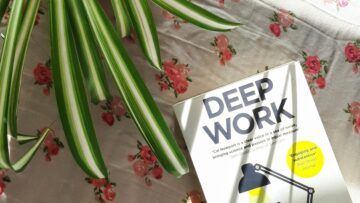
Believe you can and you are halfway there – Theodore Roosevelt.
As simple as this statement seems it’s actually difficult to practice in our current societies where comparison and the pressure to perform are so great. However, nothing beats believing in yourself when no one else does because that sort of faith is intrinsic and unshakable.
I remember years ago in my corporate career when I was the only black woman among my colleagues in a very male-dominated industry. Even the other women who happened to be there also had their own challenges because of the industry. There were times when my cheerleader’s voice had to be louder than anything I was listening to because I had to believe in myself, my abilities and the fact that I was worthy of being where I was.
I understand how crucial it is to have faith in oneself, especially when it feels like you’re standing alone against the world. Self-belief, the conviction in our own abilities and judgment, serves as a foundation for our concept of self. This is interconnected with our self-esteem, shaping how we see ourselves and what we think we deserve from life. Self-belief isn’t just about what we think we can do but also very much about the psyche that informs our decisions and our ability to persist against challenges.
As much as we would want to be affirmed by our psyche alone, we cannot deny the fact that external validation is often a mirror reflecting our worth back to us. When that mirror doesn’t show us the image we hope for, our self-belief can be threatened. It’s in these moments, though, that we need to draw on our internal reservoirs of strength.
A great example is found in the chapter on Faith in Think and Grow Rich by Napoleon Hill, where he writes about his second son, who was born without ears. He repeatedly affirmed to his son he would be able to hear. this boy began to react to sound as he grew and with the help of hearing aids was able to hear but the vital experience that pertains to this post is how the boy’s own belief in himself saw him overcoming the challenge of his disability.
Even though the boy’s mum saw his disability and was afraid he’d be treated differently, he saw himself as capable of doing what everyone else could do. So, against his mother’s will, he was able to go out and sell newspapers because he believed he was just as capable as his brother who could hear. Not only did he sell but he made more profit than expected just because he believed he could.
In practical terms, nurturing self-belief can involve daily affirmations or journaling personal achievements. Though these might seem trivial they are simple but effective ways of acknowledging your true value. When the world questions your capabilities, and it will, your self-belief is your unwavering guide empowering you to climb the steepest of hills and to stand tall in the face of doubt.
Now, one other important aspect to consider when we talk about self-belief is self-confidence. Cultivating self-confidence is about taking those beliefs about yourself and putting them into action. In my career example, I used to affirm that I was worthy and capable of my role because I had the skills to fulfil it. Then every day I worked to prove to myself first and foremost that this was my reality. I showed up as the person I believed myself to be. Self-confidence then became my way of transforming hope into concrete steps, steps that would carry me forward in my quest for personal fulfilment and success.

Practical Steps to Cultivating Self-Confidence
There are several ways to cultivate self-confidence and I would like to shed light on a couple of these here. Bear in mind that self-confidence isn’t the same as self-belief, although they do have some very strong similarities. While self-belief is the deep-seated understanding that you’re capable and worthy, self-confidence is the outward expression of that belief – the way you project yourself in the world.
To put this to practice, start by taking stock of what you’re good at. I love to write so, I would suggest you sit down with a pen and paper and list your skills and achievements, no matter how insignificant they may seem. As you put pen to paper you get to think and then recollect all the things that make up your inventory of skills. This is also a great way to recognize your strengths which is a crucial step toward building self-confidence.
The next step is taking these recognitions and turning them into actions. Say yes to opportunities that align with your strengths. Or challenge yourself to do more than the bare minimum by doing so, you’ll not only prove your capabilities to yourself but also to others, strengthening your self-confidence in the process.
In addition, setting goals, especially ones that allow you to stretch but are still within your reach, follows this nicely. When you set a goal, map out the steps to achieve it, and then follow through even when you meet obstacles. As you push through the challenges, you’re teaching yourself discipline and resilience and trust me, every time you tick a goal off your list, your self-confidence gets a booster shot.
In ticking of goals let’s not forget that every small victory is a reason to celebrate. Completing a project at work or even sticking to a workout routine for a week, are the wins that lay the foundation for enduring self-confidence. So, with each celebration, you’re reinforcing the message to yourself: ‘I can do this.’… and in the words of
Henry Ford – If you think you can or cannot either way, you are right!
This page has affiliate links and I earn a commission if you purchase through any of the links. As an Amazon Associate, I earn from qualifying purchases
Lastly, take inspiration from others you admire but do not compare your journey to theirs. I love the book Think and Grow Rich by Napoleon Hill. Just because the majority of the people he wrote about, though mostly men, were also laymen who had the strongest self-belief that helped them achieve the things they did. Sometimes, seeing and hearing other people’s stories can put things into perspective and be encouraging for us.
One other positive thing about having robust self-confidence is that it lays the foundation for building self-respect which helps you be better equipped to assert your worth and establish the boundaries that are paramount to self-respect.

Building Self-Respect: Boundaries and Assertiveness
Before I understood how self-respect was a vital component of self-belief, I’d take everything so personally and react to everything I encountered. I’ve however learnt from experience that when you value yourself highly, you’re less likely to crumble under criticism or rejection. Instead, you stand firmer in your convictions and maintain your composure, even when faced with doubters or naysayers.
This meant I had to learn to respond and not just react to events and also learn to set boundaries. Boundaries, for me, was learning to say no without feeling guilty or most of the time the need to justify my answer. It’s about understanding personal limits and communicating them clearly to others. It’s ESSENTIAL that these boundaries are identified and honoured, to protect your well-being and preserve your self-respect. If you are worried that people will get hurt when you set boundaries, then that is the more reason for you to establish those boundaries.
In standing firm about your boundaries comes Assertiveness not aggressiveness. Using assertiveness was the next step which was about being honest with my feelings and needs without being aggressive. It’s a BALANCE; it’s not about changing others’ behaviour, but about standing up for your own rights in a respectful way.
Here’s a hard truth I’ve come across many times: facing negativity is inevitable, but if your self-respect is strong, you’ll face it head-on. This was hard for me and even to this day, I still struggle sometimes to reject the temptation to internalize the negativity; and view it as an external issue rather than a reflection of my worth.
My biggest revelation has been that practising self-respect isn’t a one-time event it’s a DAILY practice, and sometimes it’s a struggle. But it’s a struggle that’s worth every moment because on the other side of it is a stronger, more resilient you and me.

Summing it up
Your journey to constructing and maintaining self-belief is one that is perpetually in motion, evolving with every experience and introspection. Each step you take, persistent in the face of doubt and secure in your self-worth, builds on to your journey of personal development.
Engaging in continuous self-reflection isn’t just beneficial; it’s CRUCIAL. It’s the guide that helps you steer through the ebbs and flows of your emotions and the changing motions of circumstances. It is worth noting that the practices you’ve established aren’t just for times of challenge; but routines and practices you should embody every day.
As social creatures, we thrive on each other’s strength and I also found that sharing my experience helped others build their own self-belief. So as you proceed, remember the importance of supporting those around you as sharing your journey can inspire others, creating an effect of positivity. By fostering a community anchored in mutual empowerment, you support not only your self-belief but also contribute to the collective strength of those you influence.
I hope these tips have helped in how you can cultivate an attitude of belief in yourself when no one does. With these insights and actions at hand, I would suggest that no matter where you are in life at the moment you can always start by embracing your worth, looking for inspiration to empower your journey, and cultivating an unwavering belief in yourself because you are worthy exactly as you are. Your story is yours to write, and it’s one filled with unlimited potential. Let me know if you have any questions or would like to share your experience in the comments.
Love & Light
Sheila Daisy




